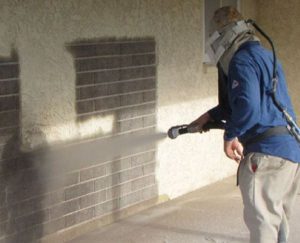
Introduction
Media blasting, also known as abrasive blasting, is a powerful surface finishing technique used to clean, polish, or prepare surfaces. By using a stream of abrasive material, media blasting can effectively remove rust, paint, contaminants, and other surface imperfections, making it a vital process in various industries.
What is Media Blasting?
Media blasting involves propelling abrasive particles at high velocity to clean or modify the surface properties of an object. This method can achieve a variety of finishes, from smooth polishing to rough texturing, depending on the type of abrasive media and blasting technique used.
Types of Media Blasting
Sandblasting is one of the most common forms of media blasting. It uses silica sand as the abrasive material, which is propelled by compressed air through a nozzle to clean or etch surfaces.
Bead Blasting
Bead blasting employs glass beads as the abrasive medium. This technique is less aggressive than sandblasting and is used for cleaning surfaces without damaging them, making it ideal for delicate materials.
Soda Blasting
Soda blasting uses sodium bicarbonate (baking soda) as the abrasive material. It is a gentle process, suitable for cleaning softer metals, wood, and even masonry without causing damage.
Dry Ice Blasting
Dry ice blasting uses dry ice pellets as the abrasive. This method is non-abrasive and ideal for cleaning sensitive equipment in the food industry, as it leaves no residue.
How Media Blasting Works
Equipment Used
The primary equipment used in media blasting includes:
- Blast Pot: Holds the abrasive media.
- Compressor: Provides the air pressure needed to propel the media.
- Blast Nozzle: Directs the abrasive stream onto the surface.
- Protective Gear: Includes gloves, masks, and suits to ensure operator safety.
Process Overview
- Preparation: The surface to be treated is cleaned of loose debris and contaminants.
- Blasting: Abrasive media is propelled at high velocity through a nozzle towards the surface.
- Post-Blasting: The surface is inspected, and any residual media is cleaned off.
Benefits of Media Blasting
- Efficient Cleaning: Quickly removes rust, paint, and other contaminants.
- Surface Preparation: Prepares surfaces for painting, coating, or bonding.
- Versatility: Suitable for a wide range of materials, including metal, wood, and plastic.
- Non-Toxic Options: Certain media, like soda and dry ice, are environmentally friendly and non-toxic.
Applications of Media Blasting
Media blasting is used in numerous industries, including:
- Automotive: For paint removal and surface preparation.
- Construction: To clean and prepare masonry and concrete surfaces.
- Manufacturing: For mold cleaning and surface finishing.
- Marine: To remove barnacles and prepare ship hulls for repainting.
Safety Considerations
Media blasting involves high-speed abrasive materials, which can pose health risks if not handled properly. Key safety measures include:
- Proper Ventilation: Ensure adequate ventilation to avoid inhaling dust and fumes.
- Protective Gear: Use masks, gloves, and suits to protect against abrasive particles.
- Regular Maintenance: Keep equipment in good working condition to prevent accidents.
Conclusion
Media blasting is an essential process for surface preparation and finishing in various industries. By understanding the different types of media blasting and their applications, businesses can choose the most suitable method for their specific needs.
FAQs
What is the best abrasive for media blasting?
The best abrasive depends on the material and the desired finish. Sand Blasting is common for heavy-duty cleaning, while glass beads and soda are used for gentler applications.
Can media blasting damage surfaces?
Improper use of media blasting can damage surfaces. It’s crucial to choose the right media and technique for the material being treated.
Leave a Reply